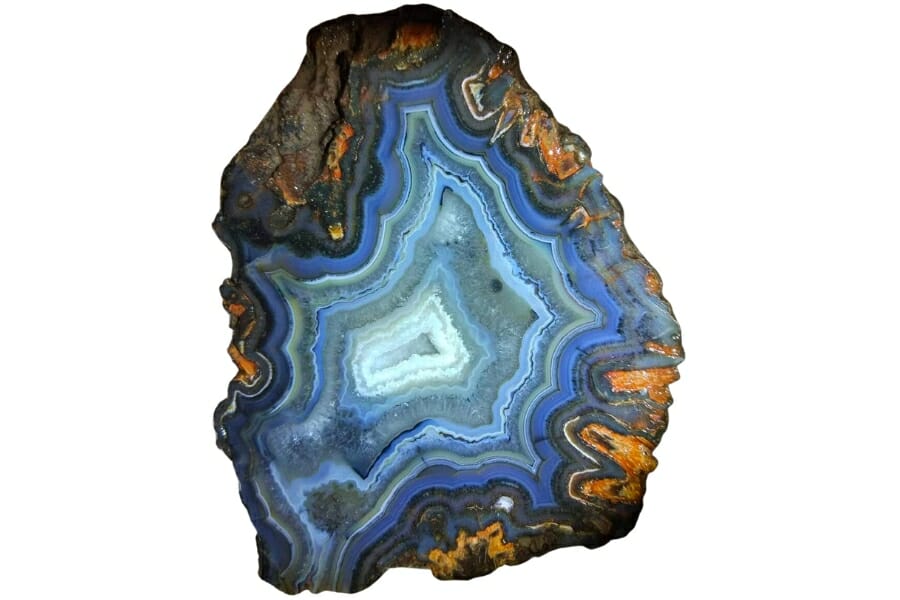Texas is like a treasure chest for geology lovers, with a wide variety of rocks and minerals to discover. One of the most amazing gems you can find here is the beautiful agate, with unique patterns that range from swirly waves to sharp lines.
While we have plenty of these gems, finding agates in Texas can be like a game of hide and seek. It’s not always easy to spot them, especially if you don’t know where to look. But with the right guidance, you can uncover these hidden beauties!
We’ll share with you several awesome places where you can spot Texas agates, such as Brewster County, Lobo Valley, Glass Mountains, Lake Balmorhea, and, of course, Rio Grande.
We’ll also briefly go through the different types of Texas agates, so you’ll get familiar with them even before your most-awaited hunting trip here. So put on your explorer hat and get ready for our exciting discussion of the agate wonders of Texas!
What is Texas Agate?
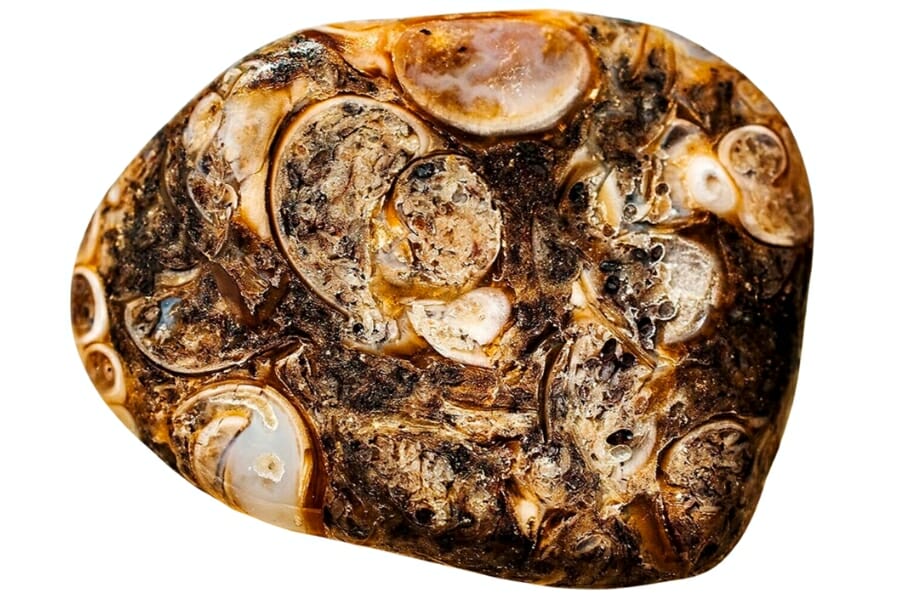
Agate is a type of quartz that’s commonly found everywhere. What makes it special is how it forms in layers, creating all kinds of stunning patterns and colors. Just imagine swirls, stripes, or even spots! The variety is so wide that no two agates are exactly the same.
They form in volcanic rocks or ancient lava flows where there are tiny pockets or holes. Over time, mineral-rich water flows through these holes and leaves behind layers of minerals. The result? A jaw-dropping stone that’s a joy to find and collect! That’s why it’s no surprise that agate is well-valued and prized.
Now, here’s the exciting part: Texas is a treasure trove for agates! Thanks to its rich geology and history of volcanic activity, we are also home to different types of agates.
Moss Agates
Moss agate is not actually made of moss, but when you look at it, you’ll see why it gets its name. Inside the clear or milky white stone, there are these awesome, mossy-looking patterns that can be green, brown, or even reddish.
What you’re seeing are minerals like iron and manganese that have been trapped inside the stone.
Luckily, you can find moss agates in Texas. While it’s not as common as some other types of agates here, you can find it with a keen eye and a bit of patience.
Fire Agates
Fire agate really lives up to its name! When you hold it up to the light, it can dazzle you with its fiery bursts of color. It’s like holding a tiny, shimmering sunset in your hand.
This special gem has layers of iron oxide and silica that play with the light, creating a magical play of reds, oranges, and even greens and blues.
While Texas is a hotspot for many types of agates, fire agate is not typically found here. The best-known locations for this type are further west, in places like Arizona and New Mexico.
Blue Lace Agates
Blue lace agate is like a dreamy piece of the sky captured in a stone. This lovely gem is known for its soft blue hues with delicate white or lighter blue patterns that look like lace.
Unfortunately, though, blue lace agate isn’t naturally found in Texas. It’s most famously sourced from places like Namibia in Africa.
Plume Agate
Plume agate has unique, feather-like inclusions that can remind you of soft plumes or delicate ferns. These inclusions can be a variety of colors like red, black, white, or even gold.
The way the plumes spread inside plume agates can look like little bursts of fireworks or soft paintbrush strokes. They’re formed from minerals like manganese or iron that get trapped inside and create the beautiful patterns we see.
The exciting news is that you can find plume agate in Texas! Parts of our state, especially areas in the west like Marfa and Alpine, are known to have some beautiful specimens of this type.
Turritella Agate
Turritella agate isn’t your regular agate; it’s filled with loads of tiny fossilized snail shells. These snails lived millions of years ago, and over time, their remains became part of this awesome stone. When you look closely, you can see the intricate spirals and details of the snail shells.
The name “Turritella” comes from a type of snail, but here’s a fun fact: the actual fossils inside the stone come from a different kind of freshwater snail.
If you’re wondering whether you can find this interesting agate here, the answer is a clear yes!
Blue Agate
Blue agate is known for its gentle blue tones, which can range from pale sky blue to deeper shades. What’s cool about blue agate is how it captures the calm and soothing vibes of the color blue.
Now, can you find this blue wonder in Texas? Absolutely! It’s not uncommon for rockhounds exploring the vast landscapes of our state to come across these serene stones.
Aside from agate, you can also find different crystals in our state. After all, Texas has many great crystal mine sites that might just be near you.
The key factors in our recommendations are:
- The deep experience and understanding of our team about the area
- Recommendations from local groups and clubs
- How easy it is to get the a particular location
- Safety and potential hazards when collecting
- Weighing private and public locations
- The ability for both experienced and novice agate enthusiasts to find great samples
With these factors in mind we’ve been able to put together a fantastic list that just about anyone can use!
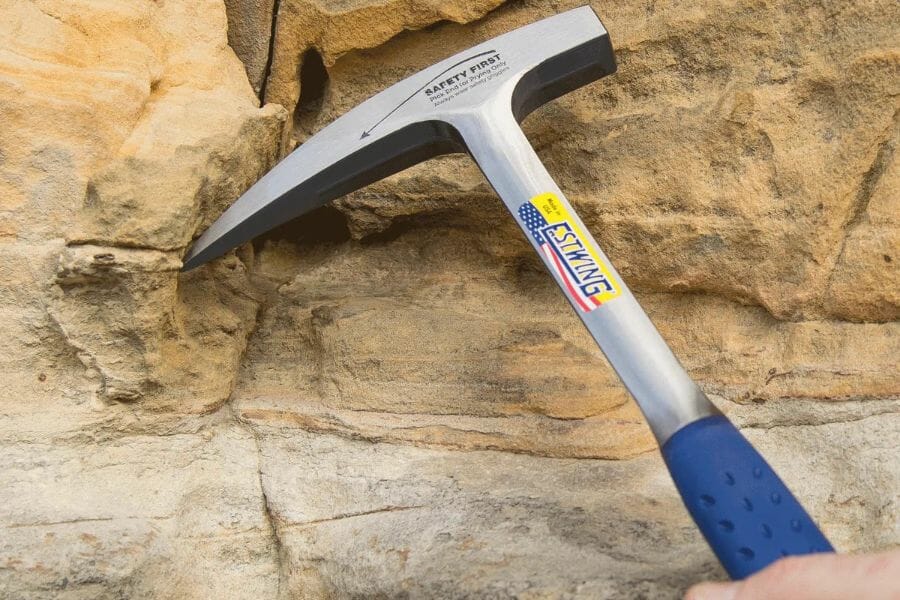
The tools every agate hunter will need
When you're out looking for agates having the right tools for the job is really going to make or break your success. You don't need a lot for most trips but there are a handful that are critical and will make your life a lot easier.
We get asked a lot about the equipment we use. Over the years we've found a handful of tools that we recommend to both new and experienced agate hunters which we outline in great detail in our complete rockhounding tools and kit guide. These are quality options that also happen to be relatively inexpensive.
Below are the basic tools that make your life so much easier and save you a ton of time. Check out the full guide to see everything we recommend bringing. One quick note, as an Amazon Associate I earn from qualifying purchases but we try very hard to only recommend gear we would use ourselves and often recommend brands you can't find on Amazon.
At a minimum you should have:
1 - Sturdy rock hammer: The Estwing Rock Pick is our standard
2 - Rugged chisels: Try Kendo' 3-piece Chisel Set
3 - Compact shovel: The Koleiya 28-inch shovel works well
4 - Rock screen pan: The Wazakura Soil Sieve Set fits the bill
5 - Eye protection: DeWalt Safety Glasses are cheap and comfortable
6 - Head protection: Malta's Safety Helmet has been our go-to
7 - Jewelers lens with at least 20x magnification: Jarlink's Jewelers Loop is perfect
The agate-finding books that we use most
There are also a few books that have been extremely helpful in the search for gems. These books have great recommendations and tips:
National Audubon Society Field Guide to Rocks and Minerals: North America
Southwest Treasure Hunter's Gem & Mineral Guide
Earth Treasures: The Southwestern Quadrant
We provide links to find these tools on Amazon but some can also be found at your local hardware stores. For more recommendations check out the link to our full tool guide above.
The Best Spots To Find Agates in Texas
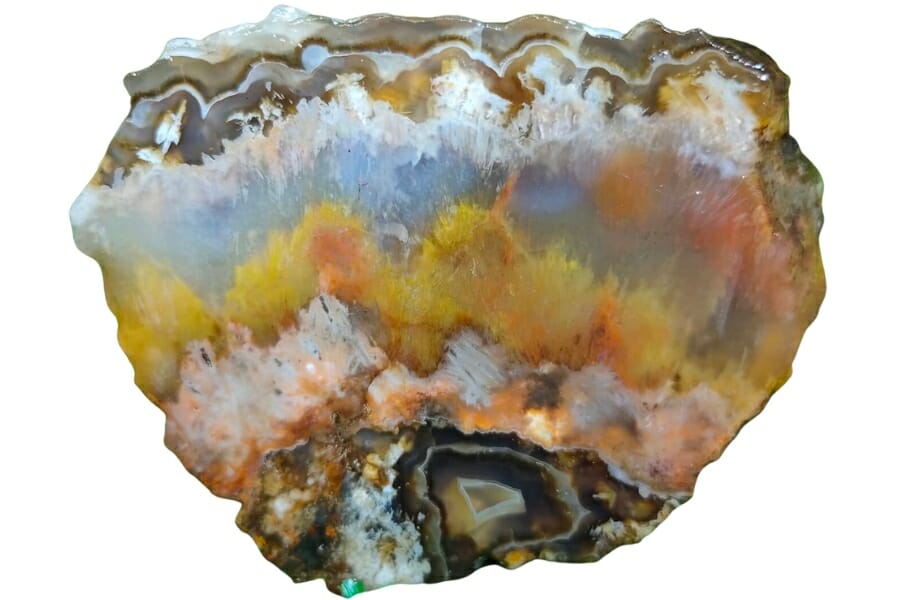
It can be overwhelming to find agates especially since Texas has plenty of great gem mine sites. Don’t worry, though, because below are some of the awesome places that you can explore to find these wonders here:
Always Confirm Access and Collection Rules!
Before heading out to any of the locations on our list you need to confirm access requirements and collection rules for both public and private locations directly with the location. We haven’t personally verified every location and the access requirements and collection rules often change without notice.
Many of the locations we mention will not allow collecting but are still great places for those who love to find beautiful rocks and minerals in the wild without keeping them. We also can’t guarantee you will find anything in these locations since they are constantly changing.
Always get updated information directly from the source ahead of time to ensure responsible rockhounding. If you want even more current options it’s always a good idea to contact local rock and mineral clubs and groups
Brewster County
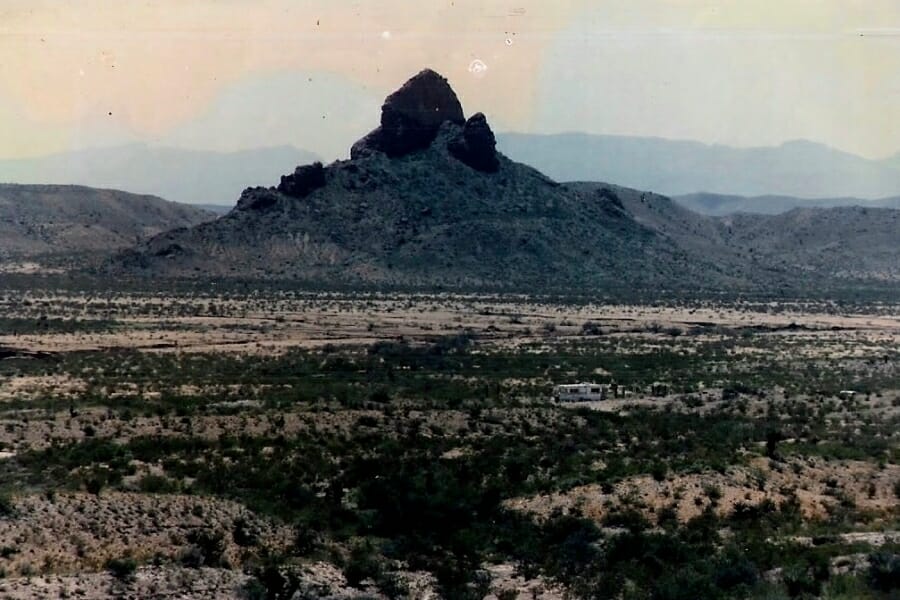
Brewster County, our state’s largest county, offers a mix of mountains, plateaus, and desert terrain. The mighty Chisos Mountains, part of the larger Trans-Pecos region, proudly stand here. These mountains, along with the sprawling deserts, paint a picture of wild beauty and rugged terrain, making it a wonder for anyone who visits.
The geology of Brewster County is like a storybook of our past. Throughout the ages, various natural processes have shaped its terrain and brought to the surface a treasure trove of rocks and minerals, including lovely agates.
While the journey to this county is a bit remote, roads like the U.S. Highway 90 and State Highway 118 make it accessible. It’s always a good idea to review Texas’ latest collecting guidelines before making your trip here.
Where we found agates in Brewster County
If you go to Brewster County specifically to find agates, you’re in luck because there are different amazing places that contain them, such as:
- J. Frank Woodward Ranch
- Agua Fria Ranch
- Needle Peak
- Stillwell Ranch and Trailer Park
- Cretaceous limestones, shales, and dumps in Terlingua
- Bed and banks of Terlingua Creek
- Anderson Ranch
- Henderson Ranch
- Cocoanut Ranch
- Chisos Basin area
Lobo Valley
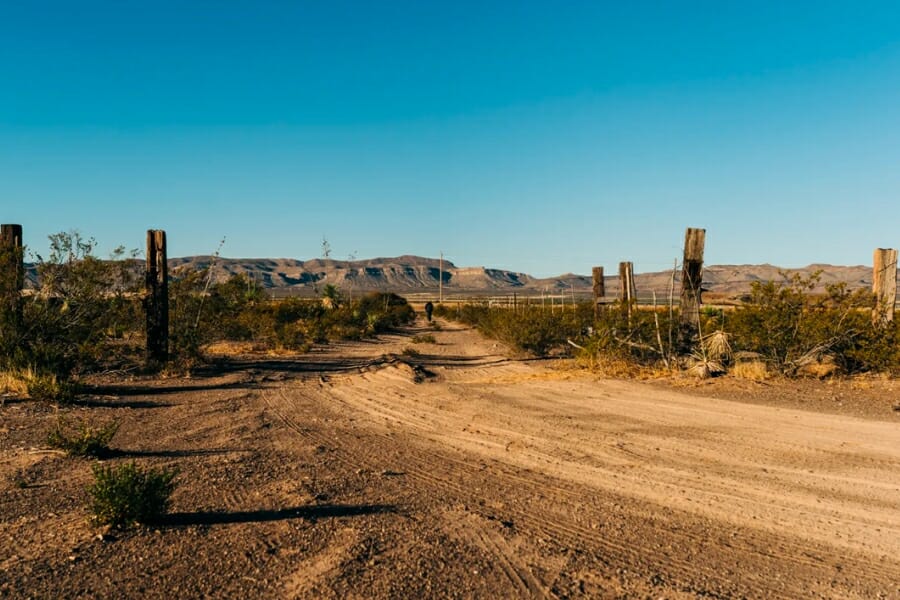
Lobo Valley is surrounded by picturesque landscapes that will make you feel like you’ve stepped into a Wild West movie. With vast expanses of desert terrain, Lobo Valley also has some hilly regions that add a touch of drama to its geography.
Like much of West Texas, Lobo Valley has a rich geological history. Hidden within its terrain are exciting geological treasures, including our beloved agate.
As for reaching Lobo Valley, while it’s not in the middle of a bustling city, it’s reasonably accessible for those with a sense of adventure. The nearby U.S. Highway 90 can lead you in its direction.
Where we found agates in Lobo Valley
Lobo Valley is known as the oldest agate region in Texas, and you can find plume agates in its general area.
Glass Mountains
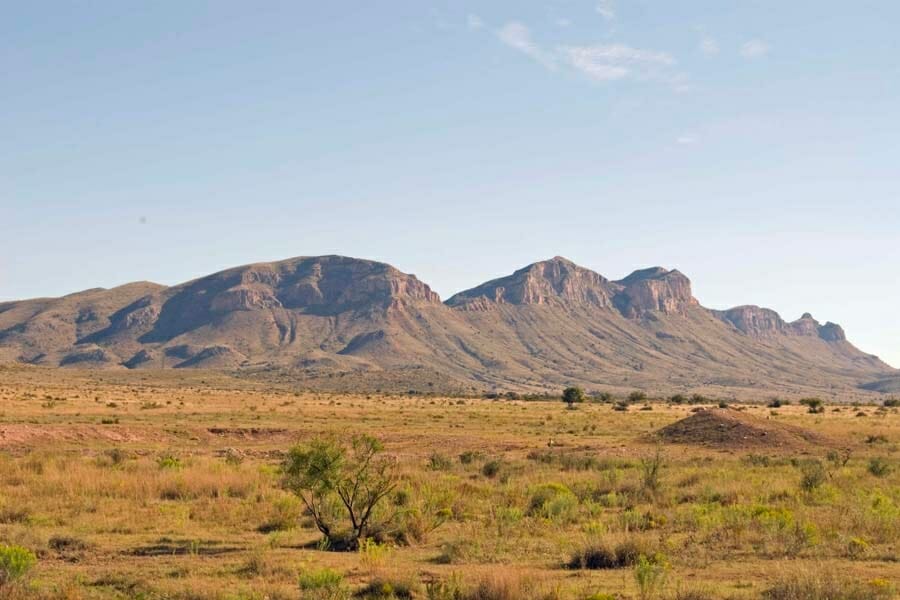
Rising proudly, Glass Mountains get their intriguing name from the shiny, glass-like appearance of some of their rocks. Stretching out across Brewster and Pecos counties, they form a breathtaking backdrop to the desert landscapes below.
These mountains showcase layers upon layers of rock, and one of its standout features is the exposed layers of colorful selenite. Also nestled among these rock layers are other equally stunning wonders like agates.
Traveling to the Glass Mountains is an adventure in itself as the terrain can be rugged. But since it’s situated near U.S. Highway 385, it’s quite accessible if you’re eager enough to reach it.
Where we found agates on the Glass Mountains
You can find amazing samples of moss and plume agates if you explore the west side area of Glass Mountains.
Lake Balmorhea
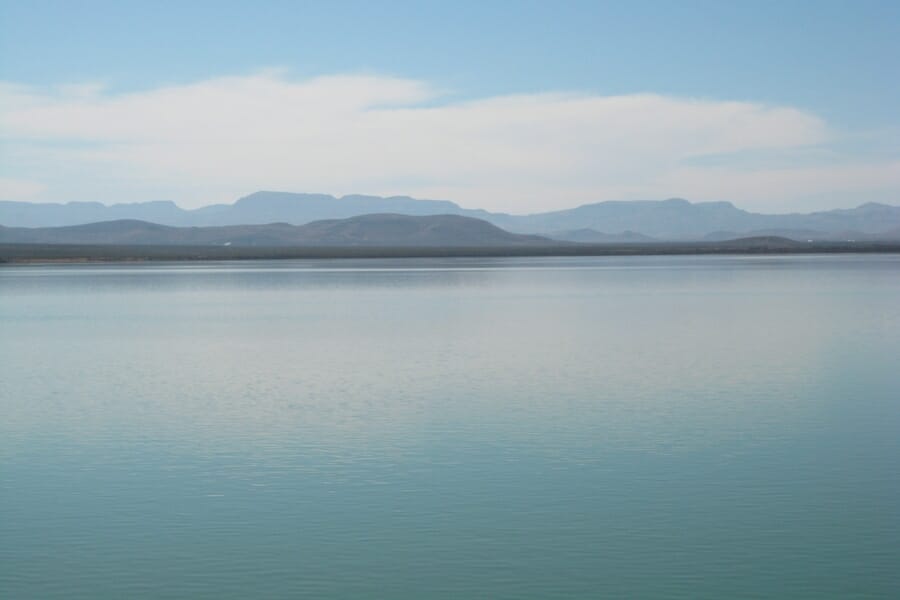
Lake Balmorhea is a man-made reservoir that’s part of the Balmorhea State Park. Fed by San Solomon Springs, the lake’s clear waters are a haven for swimmers, divers, and various aquatic life.
The region around Lake Balmorhea is rich with a mix of limestone and other sedimentary rocks. Thanks to the region’s volcanic history and the flow of mineral-rich waters, agates have found a home around Lake Balmorhea.
To reach this lovely lake, you’ll be happy to know it’s quite accessible. Situated close to State Highway 17, Lake Balmorhea is a welcoming stop for travelers in West Texas.
Where we found agates in Lake Balmorhea
You can find beautiful Balmorhea blue agates if you explore and search through the north and east sides of Lake Balmorhea.
Rio Grande
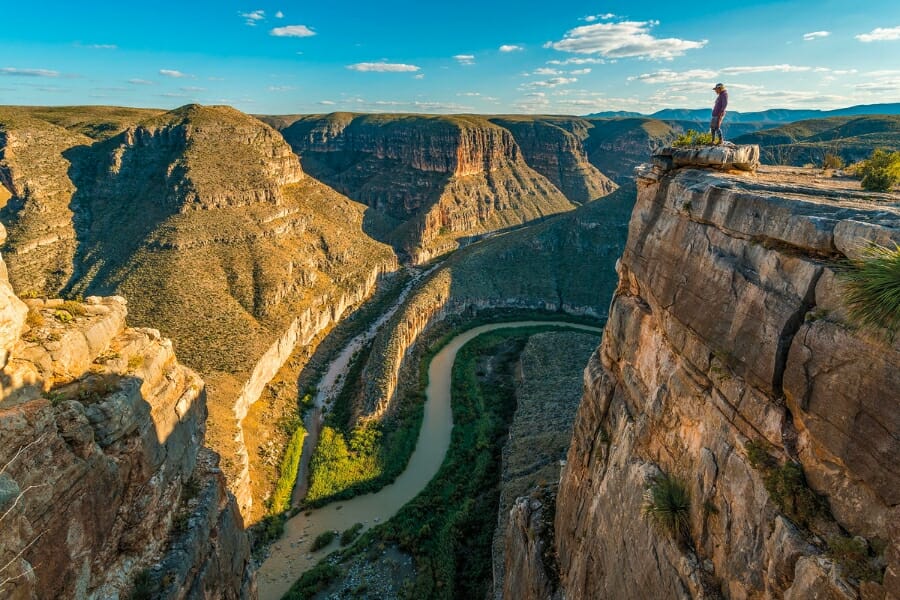
Rio Grande is a mighty river that flows through the heart of Texas, creating a natural border between the United States and Mexico. Stretching over 1,900 miles, it’s one of the longest rivers in North America!
Throughout our state, the Rio Grande winds its way through canyons, deserts, and valleys, giving life to many plants and animals along its path. Its basin and the surrounding areas are a mix of limestone, shale, and sandstone formations.
Getting to the Rio Grande is a breeze, thanks to the many roads and highways that run parallel to it, like U.S. Route 83 and State Highway 170.
Where we found agates in the Rio Grande
You can find Rio Grande agates in all the stream beds and bars of Rio Grande and tributaries.
Other Great Places To Find Agates in Texas
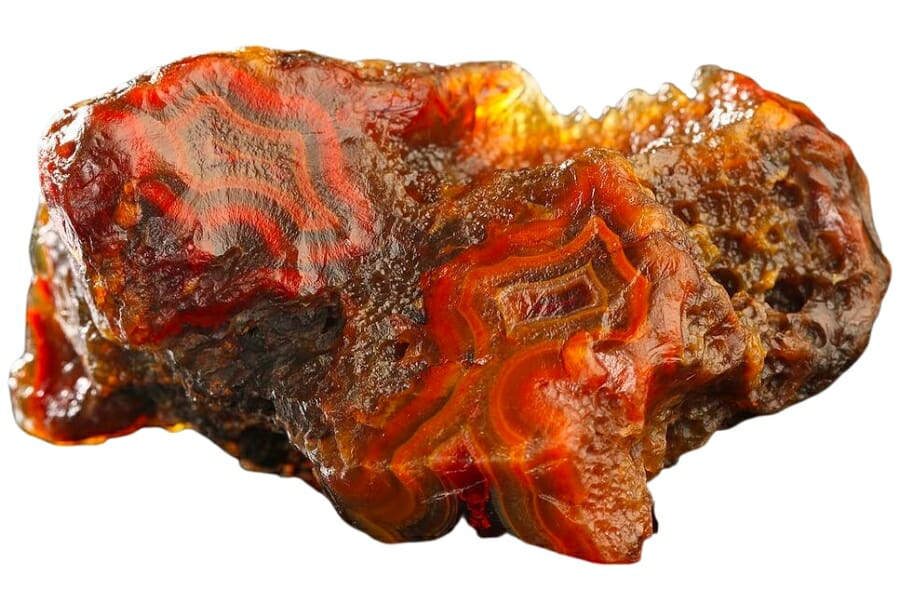
If you want to know about other awesome places where you can find agates in Texas, below are more agate-bearing sites:
Our recommendations by county
| County | Location |
| Bastrop | Wide surrounding region of Smithville especially in breaks, cuts, surfaces |
| Coryell | Limestone area in Gatesville |
| Coryell | Limestone area in Oglesby |
| Coryell | Medart Ranch |
| Culberson | Nickel Creek area wash |
| Duval | County road 44 in Freer area |
| Gonzales | General area farms |
| Gonzales | Bed and banks of Peach Creek |
| Hidalgo | Los Ebanos area |
| Hidalgo | Fordyce Gravel Pits |
| Hudspeth | Quitman Mountains |
| Hudspeth | Broad general region of Allamoore |
| Jeff Davis | Chispa Creek |
| Lavaca | Gravel pits, stream gravels, and farm fields in Moulton |
| Maverick | Helms Ranch |
| Maverick | Cunningham Ranch |
| Maverick | Villarreal Ranch |
| Maverick | Hill Ranch |
| McCullock | Live Oak Creek |
| Pecos | Tunas Creek |
| Pecos | Hovey Ranch |
| Pecos | Sixshooter Draw |
| Presidio | Bishop Ranch |
| Presidio | US-67 all way to Presidio |
| Presidio | Chinati Mountains |
| Presidio | Regional road cuts, breaks, and ranchlands in the Marfa area |
| Reeves | All areas along Barilla Draw |
| Reeves | Ranch roads in Pecos |
| Reeves | All area ranch roads running out of town in Toyah |
| San Patricio | Road cuts, breaks, banks, and gravels in Mathis |
| Trinity | Surrounding areas in cut banks, draws, washes, and slopes of Groveton and Trinity |
| Val Verde | Kothman Ranch |
| Webb | Laredo Gravel Pit |
| Webb | River bars at low water and in gravels of islands in Laredo |
| Webb | Pico Ranch |
| Zapata | Area surfaces and draws of low hills in Lopeno |
| Zapata | Ramirez Ranch |
| Zapata | Bob’s Nob |
Additional areas you can find agates
If you’re having a hard time finding agates even in our recommended areas, make sure to focus your attention on the following specific areas where they usually hide:
Streams and Creeks
Streams and creeks move rocks and minerals from one place to another. The water erodes rocks, breaking off little pieces and carrying them downstream. Over time, these pieces get tumbled and smoothed, turning them into rounded pebbles.
Among these pebbles, you can often find gemstones like agate! When you explore a stream or creek in Texas, there’s a good chance you might stumble upon this beautiful gem.
Rivers and Riverbanks
As rivers move, they churn the ground beneath, unearthing hidden treasures like gemstones. The action of the water washes away softer materials, leaving behind harder rocks, including agate.
Rivers, especially those cutting through areas rich in volcanic rocks, often carry agates with them. The riverbanks then act as resting spots for these gemstones, making them prime locations for discovery.
Lake Shores
Lakeshores are like nature’s jewelry stores, especially in a place as geologically rich as Texas. When rivers and streams flow into lakes, they bring with them a bounty of rocks and minerals. As water currents gently move these rocks, the softer ones break down, while the tougher ones, like agate, remain.
Texas has its fair share of lakes that are surrounded by lands with volcanic history and mineral-rich soil. When you stroll along the lakeshore, the sparkling sands and pebbles underfoot might just be hiding beautiful agates.
Common Agate-Hunting Questions
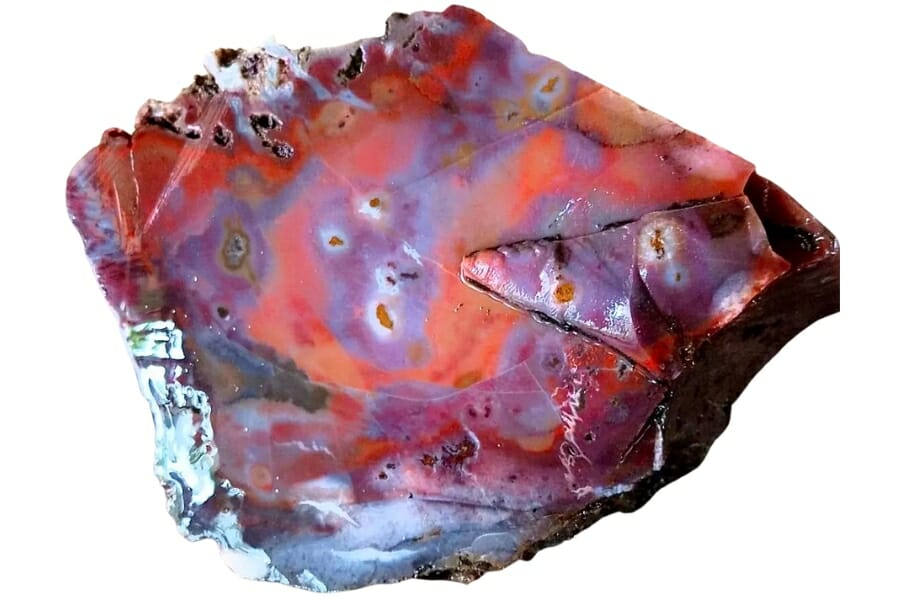
In this section, we’ll share with you the most common question asked by agate hunters in Texas, in case you have the same query in mind:
Is it illegal to collect agate in Texas?
Collecting agates is generally allowed in Texas, but there are important rules to remember. On private land, you must always secure permission from the landowner before collecting.
On state parks or federal lands, rock collecting, including for agates, is typically prohibited without a special permit. However, there are designated public areas and sites where collecting is allowed for personal use.
Always check local regulations and guidelines before setting out on your rockhounding adventure. For more information, visit the official website of the Texas Parks and Wildlife Department (TPWD).
The Best Places To Buy Agates In Texas
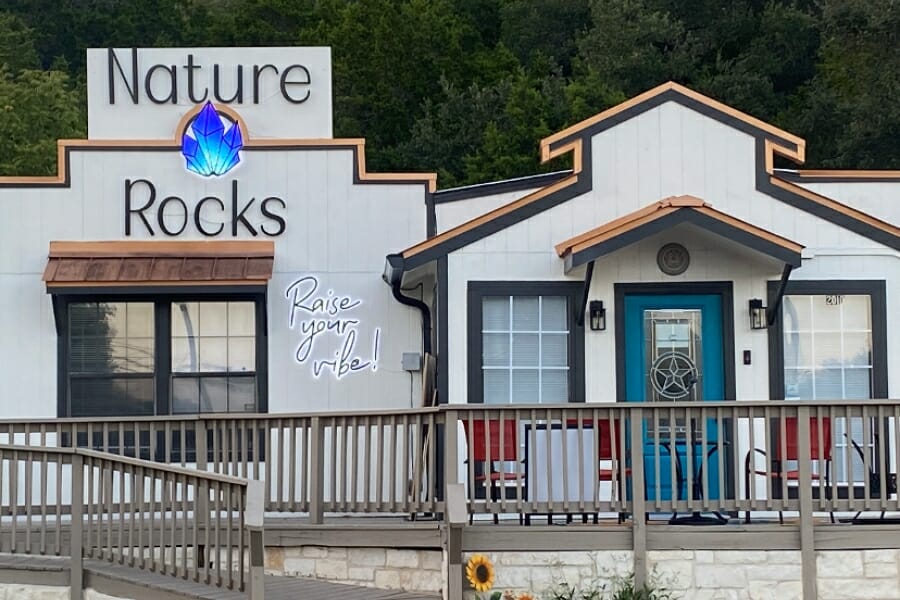
If you simply want a more relaxed way of finding, observing, and taking home a Texas agate, you can visit our trusted rock and mineral shops. Below are some of the best ones that we have:
- Enchanted Rocks & Jewelry – 805 Berry St, Llano, TX 78643
- Nature Rocks – 2010 FM2673 Suite 2, Canyon Lake, TX 78133
- Nature’s Treasures Texas – 4103 N Interstate Hwy 35, Austin, TX 78722
- Old Wizzard’s Rock Shop – 14005 African Hill Rd, Willis, TX 77378
- Spirit Quest Rock Gem & Unique Boutique – 303 Main St, Spring, TX 77373
If you have any recommendations for our list please leave a comment below!

